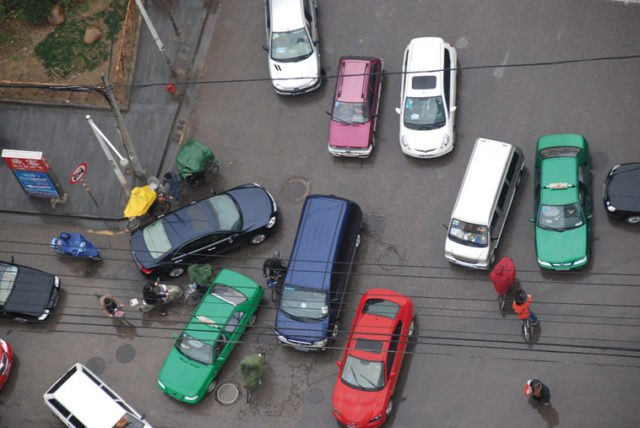China’s roads may not be the world’s most dangerous: India has more road deaths in absolute terms as well as per capita. But neither are they associated with safe and orderly driving. The explosive growth in private and commercial traffic has brought with it frequent gridlock and increasingly blatant road safety violations. While official statistics show a decline in traffic accidents and road deaths over the past decade, the World Health Organization’s Global Status Report on Road Safety 2013 estimates that actual numbers are nearly four times higher than the reported figures.
That China’s road safety still lags behind the developed world inspires constant hand wringing in the state media. In 2008, Xinhua noted that the China Traffic Safety Forum’s 2007 figure of 5.1 road deaths for every 10,000 motor vehicles was worse than every developed country and more than double the global average. Xinhua specifically highlighted problem behavior including switching lanes without signaling, ignoring traffic lights, driving against the traffic and reversing on a highway to catch a missed exit.

Without lines or traffic lights, a variety of vehicles jammed in the middle of the street.
Photo: Let Ideas Compete
In October 2012, the People’s Daily published an opinion piece on the state of ‘uncivilised driving’ in China and what to do about it. It quoted from the 2011 ‘China Automobile Community Development Report’ (Zhongguo qiche shehui fazhan baogao 中国汽车社会发展报告), which predicted that there would be 86.5 million private vehicles on the road in China by 2013. (The most recent edition predicts over 100 million this year.) The newspaper, the Party’s official mouthpiece, observed that while China has become a car society, it has not succeeded in teaching people behind the wheel to drive properly. How to remedy the state of uncivilised driving? Mostly by the cultivation of healthy driving habits, the paper insisted, backed up by strict enforcement of rules and regulations.
From 1 January 2013, a new set of rules, Regulations Covering the Application for and Use of a Motor Vehicle Driver’s License (Jidongche jiashizheng shenling he shiyong guiding 机动车驾驶证申领和使用规定) impose hefty penalties on traffic violations. Anyone caught running a yellow light has six points deducted from their license. Those who cover up their license plates to avoid being identified by surveillance cameras (a common ruse) risk losing twelve points — effectively an automatic license suspension. Online, drivers harshly criticised the new rule governing yellow lights: if going through a yellow light is forbidden, they asked, then why not just have green and red lights?
Whether as a result of self-restraint or heightened enforcement, just one month after the promulgation of what a social media meme called ‘the most severe traffic law in history’, Xinhua was able to report an improvement on China’s roads: ‘China reported a dramatic decline of traffic violations and road accidents in January’. According to the Traffic Administration Bureau, the death toll from running traffic lights and speeding fell 13.3 percent and 71.2 percent respectively compared with the previous year. There were about 1.37 million cases of traffic light violations in January, a 40 percent decrease from the same period in 2012, and 285,000 cases of speeding — a 32.5 percent drop.


